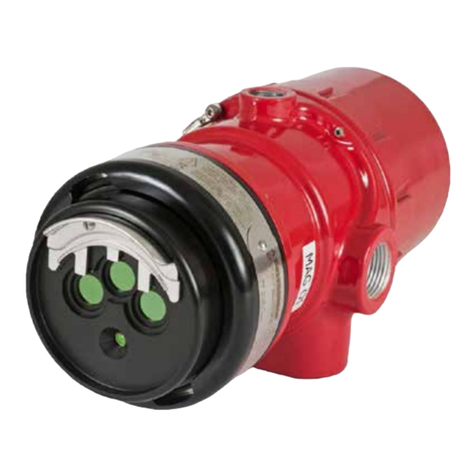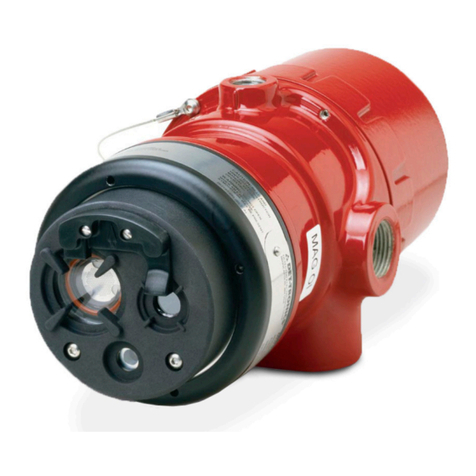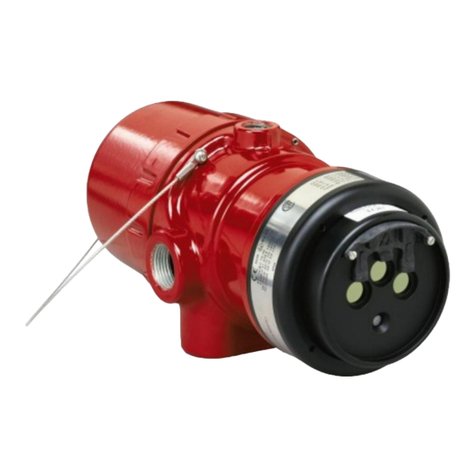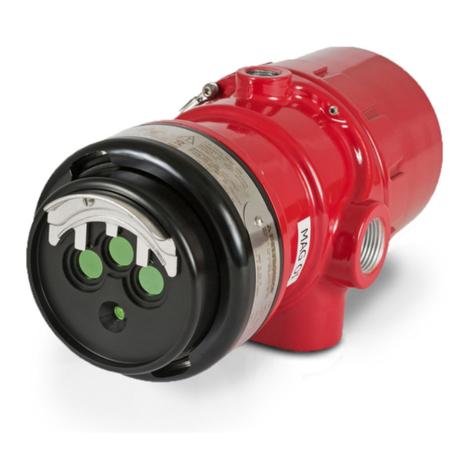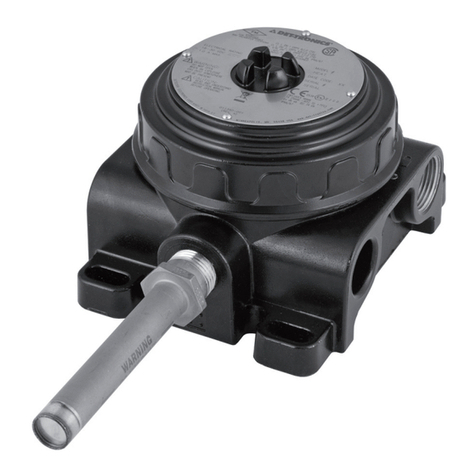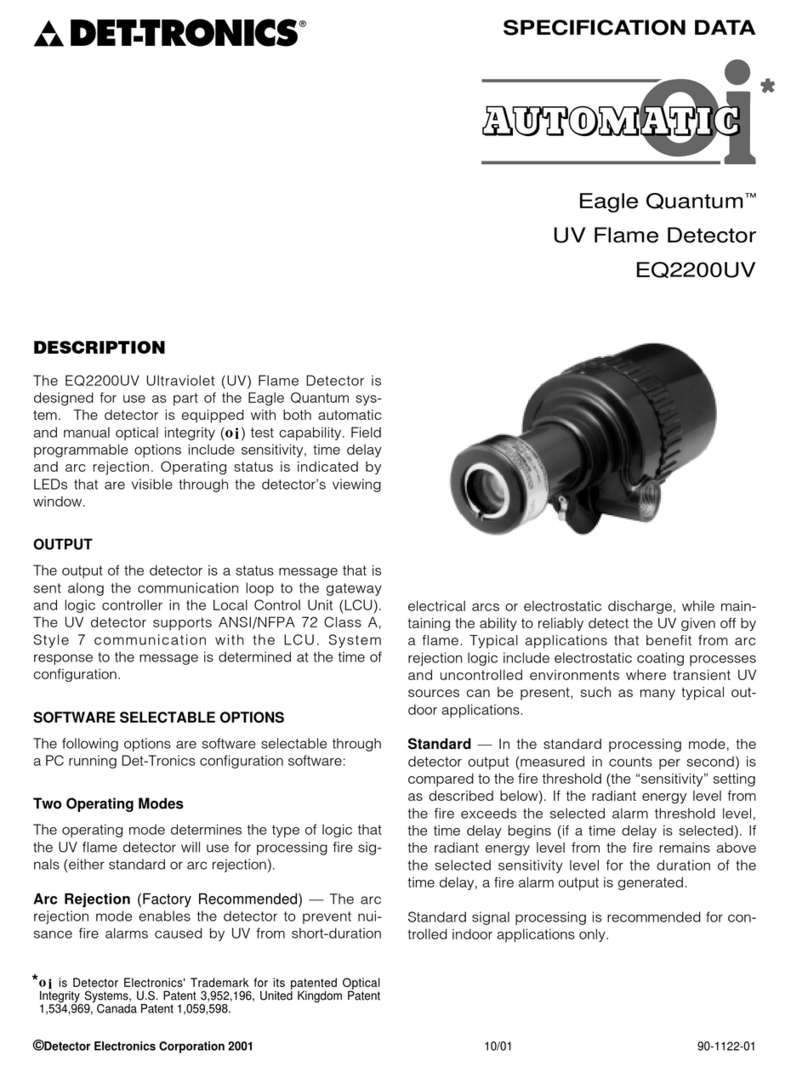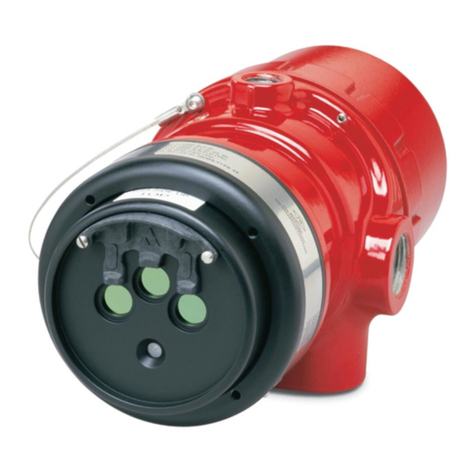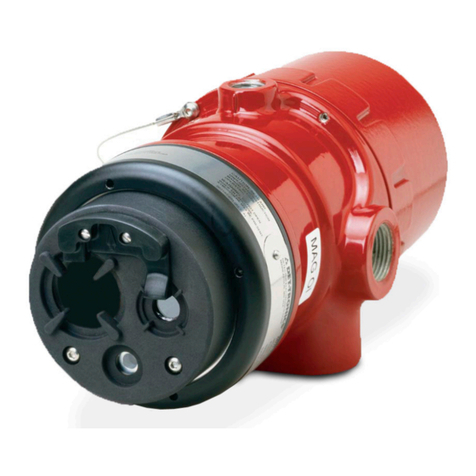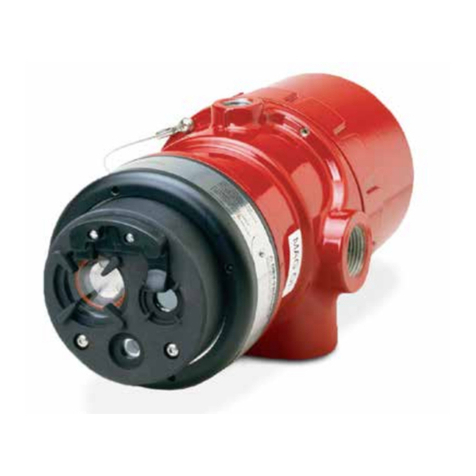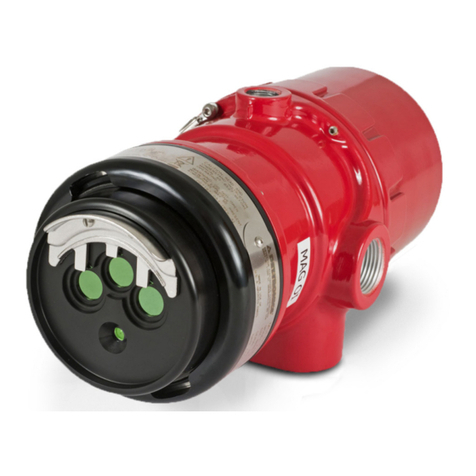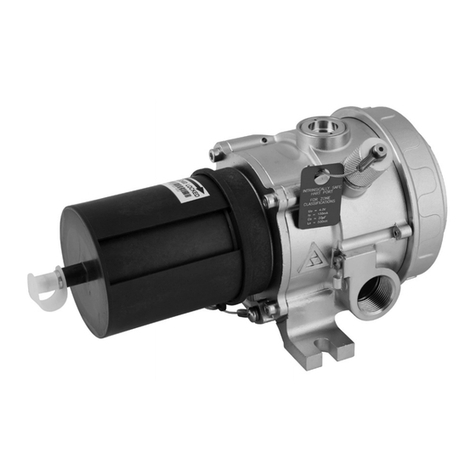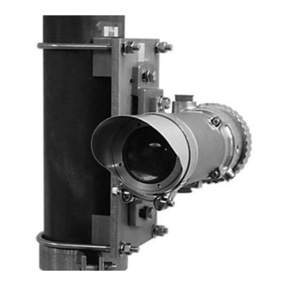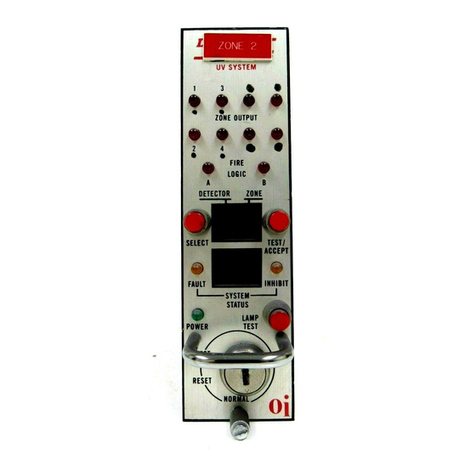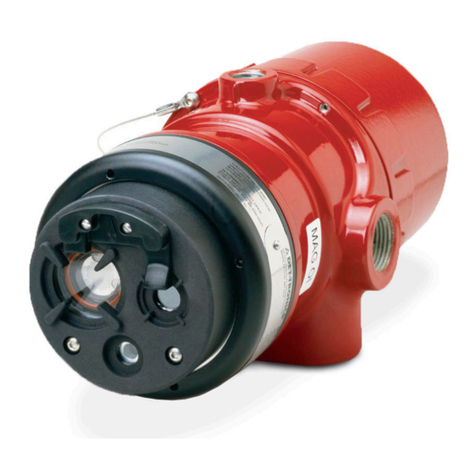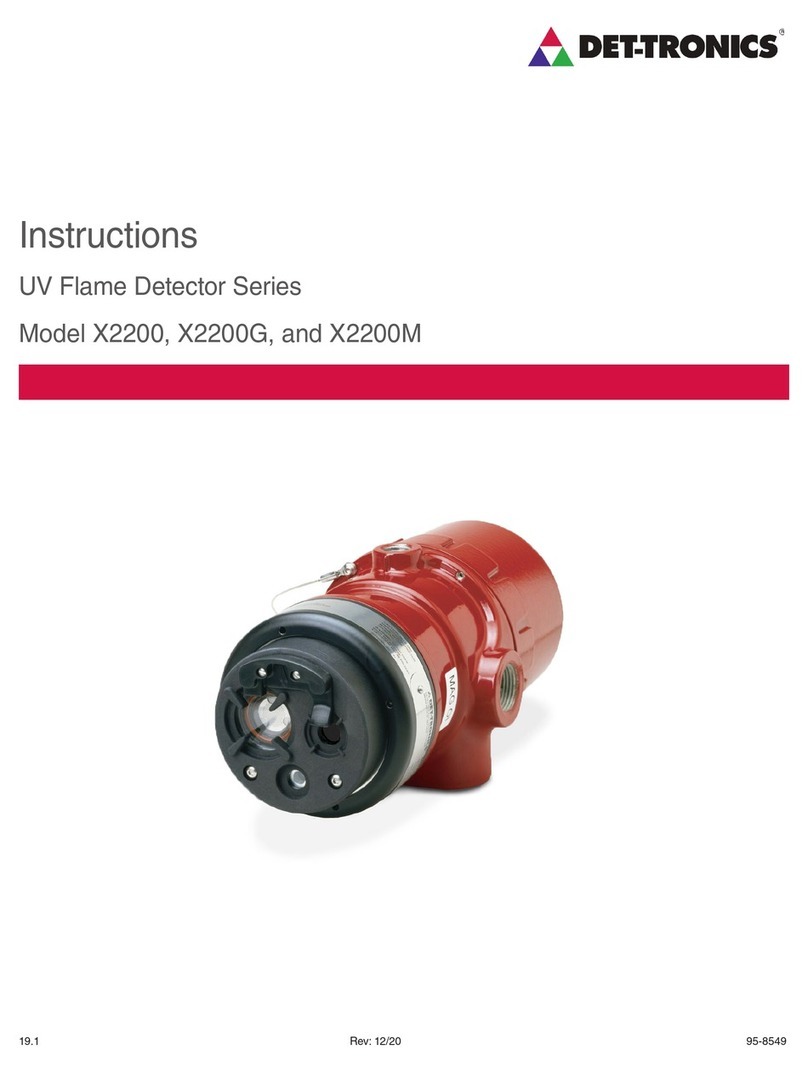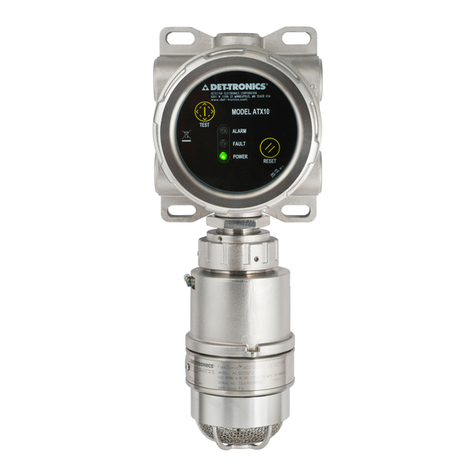
395-8790
1. 1
GENERAL APPLICATION
INFORMATION
RESPONSE CHARACTERISTICS
Response is dependent on the detector's
sensitivity setting, distance, type of fuel,
temperature of the fuel, and time required for
the fire to come to equilibrium. As with all fire
tests, results must be interpreted according to
an individual application.
See Appendix A, the FM Approval and
Performance Report, in each models manual for
third-party approved fire test results. Additional
fire test results are available from Det-Tronics.
IMPORTANT APPLICATION CONSIDERATIONS
In applying any type of sensing device as a fire
detector, it is important to know of any conditions
that can prevent the device from responding
to fire, and also to know what other sources
besides fire can cause the device to respond.
See each X-Series flame detectors instruction
manual for important information on application
considerations specific to each model, as well
as sensitivity options.
IMPORTANT SAFETY NOTES
WARNING
Do not open the detector assembly in a
hazardous area when power is applied.
The detector contains limited serviceable
components and should never be opened.
Doing so could disturb critical optical
alignment and calibration parameters,
possibly causing serious damage.
CAUTION
The wiring procedures in this manual are
intended to ensure proper functioning of the
device under normal conditions. However,
because of the many variations in wiring
codes and regulations, total compliance to
these ordinances cannot be guaranteed. Be
certain that all wiring complies with the NEC
as well as all local ordinances. If in doubt,
consult the authority having jurisdiction
before wiring the system. Installation must
be done by a properly trained person.
CAUTION
To prevent unwanted actuation or alarm,
extinguishing devices must be disabled prior
to performing system tests or maintenance.
CAUTION
The X-Series flame detectors are to be
installed in places where the risk of
mechanical damage is low.
ATTENTION
Remove the protective cover from the front
of the detector before activating the system.
ATTENTION
Observe precautions for handling
electrostatic sensitive devices.
ATTENTION
For models X2200, X2200M, X5200, and
X5200M ame detectors, the source tube is
a ame-sealed gas tube containing Neon,
Hydrogen, and a trace amount of Krypton
85 (Kr85), a radioactive material. The total
volume of gas within the tube is 0.6 ml per
tube, making the gas mixture inside the
tube nonflammable. If the gas envelope
is broken, it will not produce a ammable
mixture, and the gas immediately disperses
into the air and is unlikely to present
any type of hazard. Krypton gas and its
radioactive isotope are inert and are not
absorbed by the body. No special handling
measure or personal protection equipment
is needed for the UV detectors.
WIRING PROCEDURE
Wire Size and Type
The system should be wired according to
local codes. The wire size selected should be
based on the number of detectors connected,
the supply voltage, and the cable length.
Typically 16 AWG, 2.5 mm
2
shielded cable
is recommended. Wires should be stripped
1/2 inch (12 mm). In some cases where the
X-Series flame detector is replacing existing
pulse output detectors, the wiring and power
supplies may not be adequate. Consult the
factory for assistance.
IMPORTANT
A minimum input voltage of 18 Vdc must be
present at the detector.
The use of shielded cable is required to protect
against interference caused by EMI and RFI.
When using cables with shields, terminate the
shields as shown in Figures 3through 7. Consult
the factory if not using shielded cable.
The “B” (pulse output) and “D” (
oi
driver) leads
from each detector should be shielded from the
